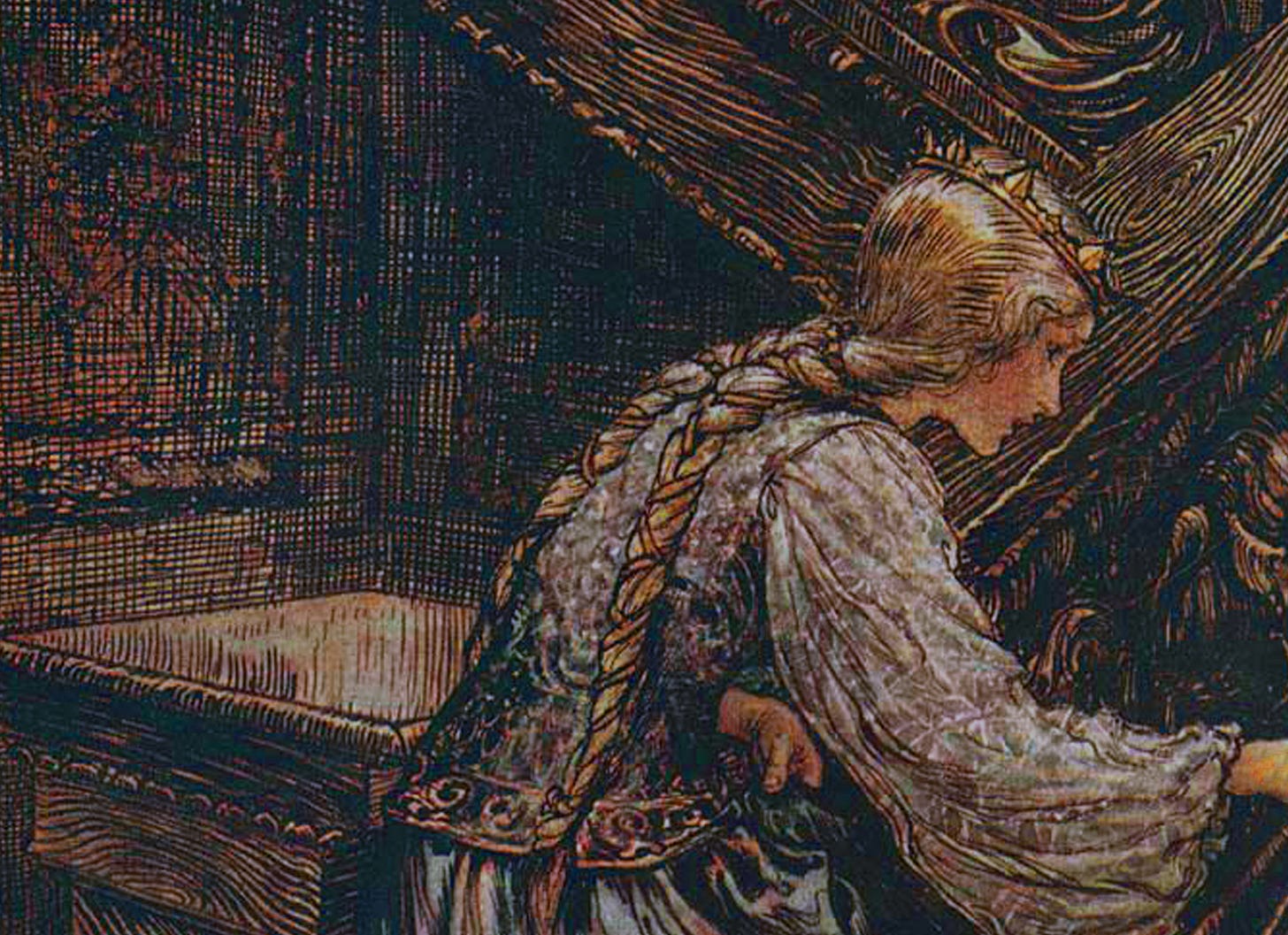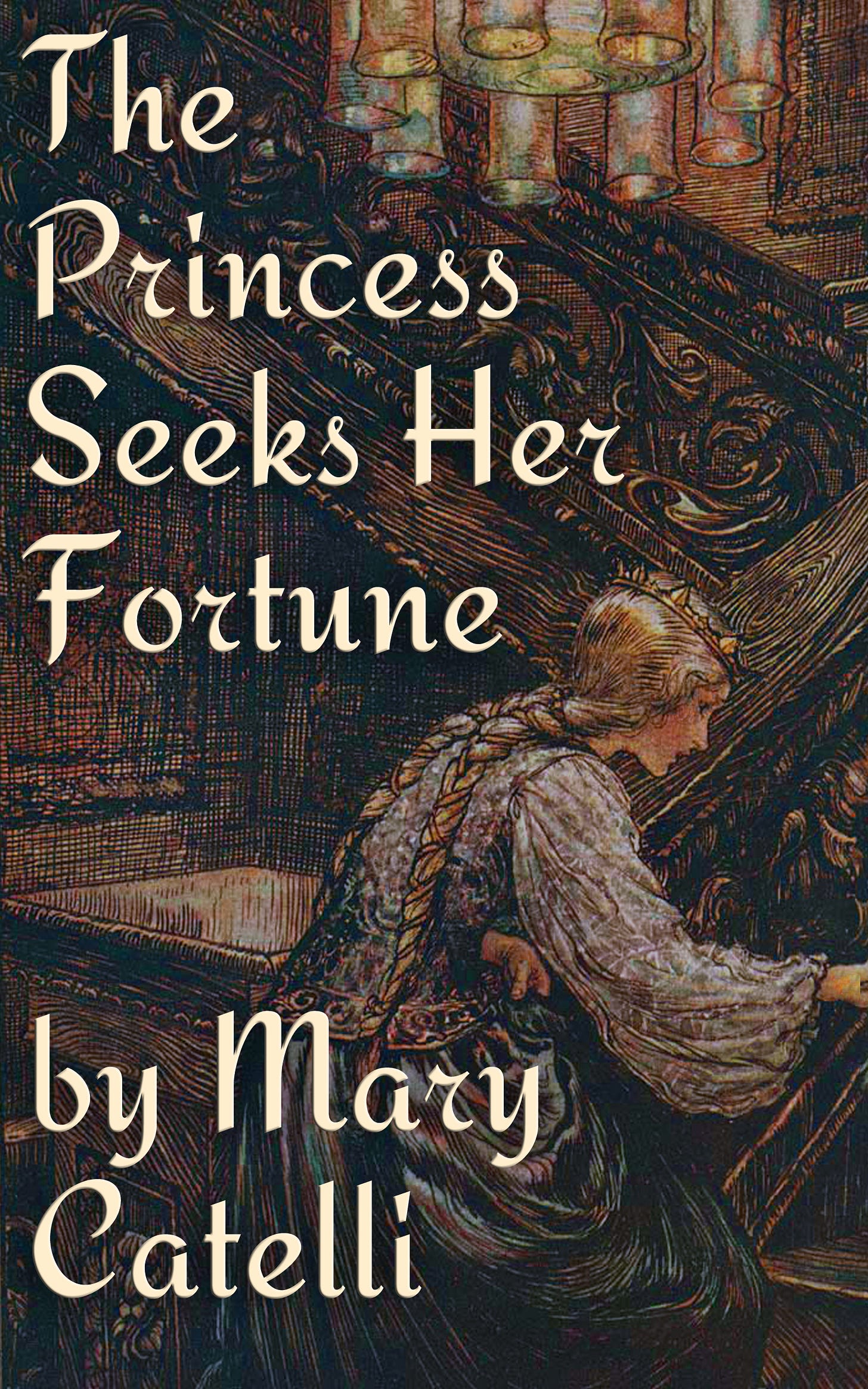Once upon a time, having fared forth in her quest for fairy tales (the one I recommended here1) and returned with many treasures and oddments, this writer sat in her castle and thought of what to do with them. I contemplated the wonderful world of fairy tales, and in particular, the retellings where fairy tales keep coming true. A beautiful princess is in the enchanted forest, lamenting that her wicked stepmother had cruelly driven her out. . . and another character is sourly thinking that the two women cooked it up between them.
Virtually all stories set in a land of fairy tales are comic, because they involve only the Pop Top 20 -- if that many -- and the limited set of stories keep happening again and again, never even brushing on a variant, and so every character, as well as every reader, knows every twist and turn, and even most of the gags that can be played with them.
(The limited set is not likely to expand, despite the rich variety out there. More than a century ago, Joseph Jacobs complained that "What Perrault began, the Grimms completed," but while he managed to bring "Jack and the Beanstalk" and some others into the pool, it's still very small.)
I didn't want to do that. I wanted to set forth on a tale where all sorts of fairy tales were true, that ventured past the main highways of Pop Top 20 to all the little byways of little known tales. All sorts of things. Like, oh, continue the tale past the wedding. (Not all fairy tales stop at the wedding, only those where they deal very definitively with the villain at or before it, and no new villain appears.) Indeed, I decided I was going to do a story where all sorts of fairy tales were true, but to include nothing of the Pop Top 20. Wander all over the map except the main routes.
Whether I succeeded is -- debatable. After all, if your princess makes a comment about going to the ball three times, it could be a reference to Aschenputtel, Catskin, Cap O'Rushes, Ashpet, and many another tale, but most readers will think of Cinderella. Even if her father throws her out so that she takes a job in a kitchen.
It was still fun to throw them in, but I kept them down to subplots, background incidents, and allusions, among the great number of such. And the main plot consists tales that are not commonly known.
This introduces its own issues. If the heroine makes a joke about going to a ball three times, this is instantly recognizable. If she makes a joke about a crossroad and expecting a sign giving her directions -- to the left if she wants to be cold and hungry, straight if she wants her horse to live and herself to die, right if she wants to live and her horse to die -- and the limits of this when she's going on foot, the information about it has to be slithered in, more or less adeptly. Much depended on the point of view, of course, and so I made the heroine a good student of history.
The upside of the tales being unfamiliar is that I can just tell them. Furthermore, since there are many variants of them across the world, I can pick and choose and combine elements to make just the tale I want. The hero only rarely has the sense to realize that the princess who tricked him out of his treasures is not the woman for him? Yours can, and you don't even have to keep the treasures the same, or the way he tricked her to get them back. This is probably the most tricky business of all in this sort of story. It takes deep familiarity with fairy tales to tell which tropes can be adroitly strung together in a way that will ring the authentic fairy-tale note. (Writers dropping in tropes where they don't really fit, or comically misfit, are probably my biggest pet peeve in fairy tale retellings.)
I could even work backward to get the tales in. The story features a significant inn? Consider tales of inns. I decide that I don't want the tale about the cheating inn-keeper, so I will give a backstory of a princess who violated a prohibition, lost her husband to an enchantment, and kept an inn where she required every traveler to tell his story to stay the night.
One thing I made sure of was to clearly indicate that the heroine was not the only one with a fairy tale. Others were happening about her. Sometimes she featured as a minor character, sometimes she appeared as a bit character who would be mentioned (at most) as part of the crowd, sometime she notices something where she won't even be noticed. Indeed, sometimes it's all over before she got there. The hero who finally realized the princess was not the heroine? Generations ago. The heroine tells a tale herself, explaining an incident at an inn, in the time of the current inn-keeper, had been a minor part of a tale in her ancestry.
Which, of course, let me throw in many more fairy tales. I liked it.
Those who wish to see the results can find The Princess Seeks Her Fortune on Amazon , Barnes & Noble, Kobo, Apple Books, Everand, Smashwords, and many other fine online venues.







Another of your books I picked up in paper to re-read. I had no idea how much went into it. You make it look so effortless.